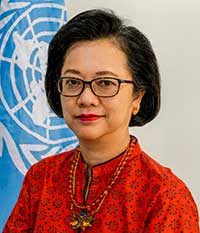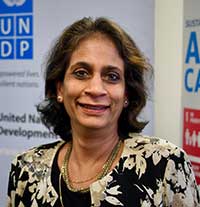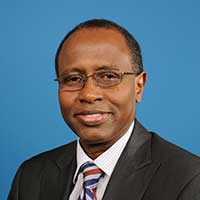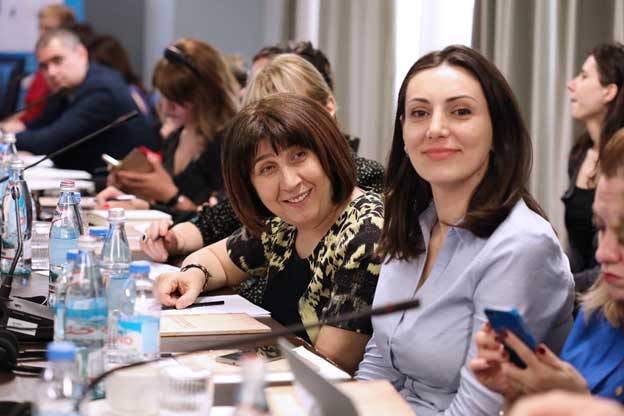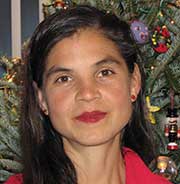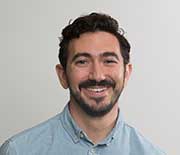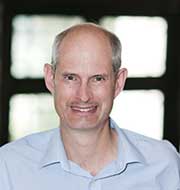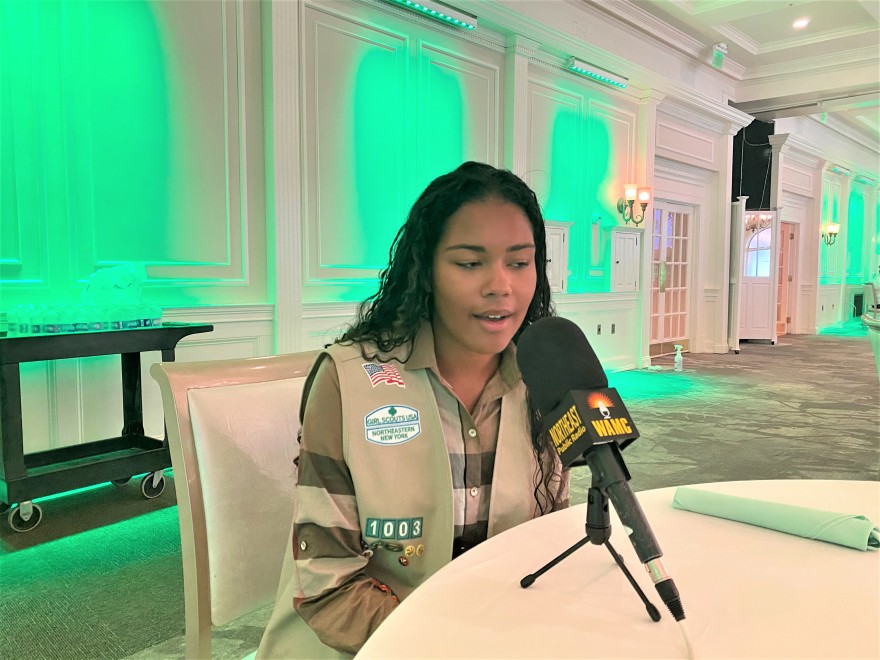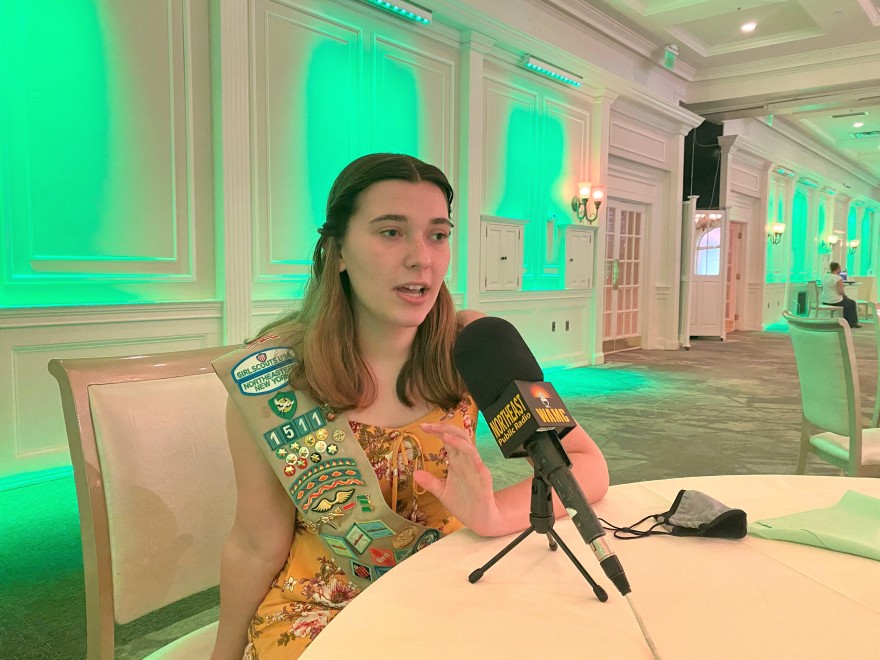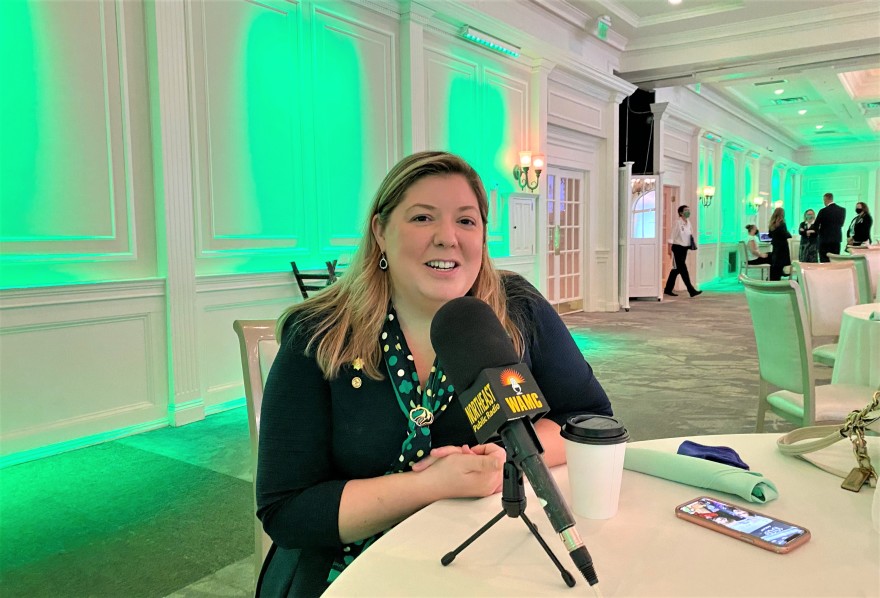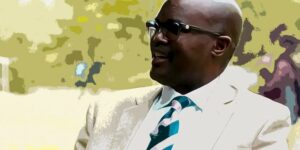
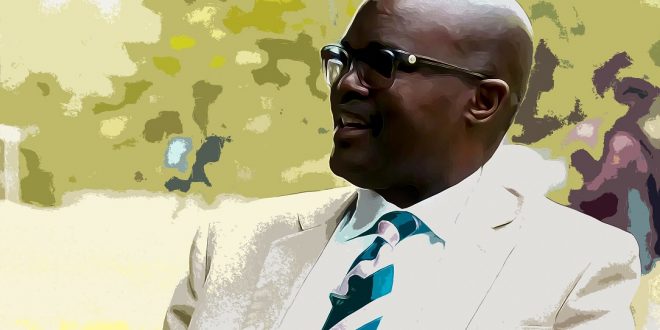
African Universities and African Future: The Meeting Point
PART A
THE INTERVIEW
(Unedited Transcript)
What do you see as the major challenges and opportunities facing African universities?
Based on my extensive research on higher education and administrative experience, especially as Vice Chancellor of an African University, I would say the challenges and opportunities facing African universities center on ten key dimensions, namely, institutional supply, financial resources, human capital, research output, physical and technological infrastructures, leadership and governance, academic cultures, quality of graduates, patterns of internationalization, and global rankings.
In terms of institutional supply, in 1969, there were only 170 universities across the continent, 35 of which were private. The number of universities increased to 446 in 1989, out of which 112 were private. In the 1990s, 338 new institutions were established and in the 2000s another 647. By 2015, private universities outnumbered public universities, 972 to 707. In 2018, according to the World Higher Education Database, there were 1,682 universities in Africa. The majority were private. Clearly, this was nothing short of phenomenal. Yet, in global terms, Africa had the smallest number of universities of any region, except Oceania. Africa’s share of the world’s 18,772 higher education institutions was 8.9%, compared to 37% for Asia, 21.9% for Europe, 20.4% for North America, and 12% for Latin America and the Caribbean.
In the meantime, the total number of students in African higher education institutions in 2017 stood at 14,654,667.7 million, out of 220,704,239.5 million worldwide, or 6.6%, which was less than the continent’s share of institutions. North Africa accounted for 45% of the African students. To put it more graphically, Indonesia had nearly as many students in higher education institutions as the whole of sub-Saharan Africa (7.98 million to 8.03 million). Thus, Africa’s enrollment ratios remain exceptionally low. In 2017, the world’s average enrollment ratio was 37.88%, compared to 8.98% in sub-Saharan Africa and 33.75% in northern Africa. The enrollment ratio of the high-income countries was 77.13%, for upper-middle-income countries 52.07%, for the middle-income countries 35.59%, and for lower-middle-income countries 24.41%.
African higher education has enormous opportunities to expand, to meet the huge demands of its historic youth bulge, and turn it into a demographic dividend. Africa is the only major world region that will continue to enjoy population growth for much of the 21st century. It is expected to have 1.7 billion people in 2030, 2.5 billion in 2050, and 4.5 billion in 2100, representing 19.9%, 25.9%, and 40% of the world’s population, respectively. In contrast, many of the developed countries and China are facing the demographic squeeze of aging populations and declining tertiary pipeline that threatens the survival of many universities. Thus, in the course of this century Africa is destined to have the world’s largest pool of potential tertiary students and productive labour force. This is an opportunity of historic and global proportions.
Financial resources remain the Achilles heel of African universities. Currently, all five major sources of university funding are grossly inadequate—tuition fees, auxiliary income, government subventions, philanthropic donations, and concessionary loans. Most universities especially the private ones are tuition dependent. Yet, students’ capacity to pay remains relatively low, and student aid and loan schemes are underdeveloped. In many countries, universities have failed to keep up with facilities including hostels, an important source of auxiliary revenues, so that students are forced to live in often dilapidated and dangerous neighborhoods.
Since the days of structural adjustment programs in the “lost decades” of the 1980s and 1990s, government subventions per student have declined sharply and various “cost sharing” measures adopted thereby transferring the financial burden to students and their families. Institutional philanthropic cultures and national educational aid and commercial bank loan schemes remain undeveloped in most countries, save for a few such as South Africa.
The opportunities lie in developing more sophisticated and comprehensive tuition pricing strategies and targeted student aid policies using data analytics. Partnerships between universities and private and public entities can provide much needed resources for facilities development. Universities have to become more savvy in negotiating such public private partnerships to avoid getting burned.
Also promising is the potential of philanthropic support for universities in view of the exponential growth of high net worth individuals (those with assets of more than $1 million). According to the World Wealth Report 2020, the number of high net worth individuals in Africa doubled from 100,000 in 2012 to 200,000 in 2017 (out of a global total of 12 million and 19.6 million, respectively), and their collective wealth increased from US$1.2 trillion in 2012 to US$1.7 trillion in 2017 (out of a global total of US$46.2 trillion and US$74 trillion, respectively). No less impressive is the growth of the African middle classes.
The culture of philanthropy in terms of supporting family members and even religious and political organizations is well developed across Africa, but it is not for tertiary educational institutions. Universities have to cultivate institutional capacities in terms of personnel, data systems, and cultures of giving among students, alumni, and their governing bodies. The middle classes and rich elites have to be socialized into institutional giving for universities, which is not easy as I know from personal experience as a Vice Chancellor who has put enormous efforts on fundraising. In addition to western philanthropic foundations, African foundations are growing, which can be tapped into. The provision of support and creation of concessionary loan instruments for universities by national financial institutions, and international and intergovernmental agencies deserves increased attention as well.
Human capital is in short supply. There is a severe shortage of faculty in many African countries. There are many reasons for this. Not enough doctoral degrees are being produced. For example, in Kenya only 700 are churned out each year, which is lower than doctoral graduates from a large American university. Consequently, only 34% of faculty in Kenya’s 74 universities have terminal degrees (USIU-Africa is an outlier with 76%). This reflects limited graduate supervision capacity. Interest in academic careers has declined among the best and brightest students who prefer more remunerative and prestigious professions.
The progressive devaluation of academic labor means that unlike in the early 1970s when I was an undergraduate student, currently academics in many countries are barely hanging with their fingertips to the middle class. I once asked students in the class I teach at USIU-Africa how many wanted to become academics. Not a single hand went up. When I asked them why, many laughed, the professors are poor, they said, they drive battered cars and dress badly. The quality of the recipients of doctoral degrees can also be questionable. The Cabinet Secretary for Education in Kenya once lamented that less than 10% of PhD holders were qualified. This can partly be attributed to the proliferation of contract cheating, an industry in which Kenya is a major global player.
In many African universities, staff recruitment processes, performance management systems, staff development programs, and succession planning tend to be ad hoc and weak. The specters of tribalism, nepotism and corruption in hiring, promotion, and rewards cast a dysfunctional pall on many universities. The professionalization of talent development and management is imperative for institutional growth, effectiveness, and resilience.
The faculty shortage can be addressed at the national, regional and continental levels by embracing what the Dakar Summit’s Declaration called, “diversification, differentiation and harmonization of higher education systems.” African governments and regional economic communities need to designate some universities as research universities that produce faculty and drive the higher education sector. Moreover, it is critical to promote academic mobility for students, academic staff, credit transfer, and mutual recognition of academic and professional qualifications.
Beyond the continent, African universities need to take seriously mobilizing academic capital from the diaspora, and developing effective strategies to import excess academic labor from the global North much as universities in the global North aggressively import students from the global South. Governments and regional organizations could facilitate this by developing time-bound programs of well-funded transnational exchange with their counterparts in the global North, a kind of CADFP and Academics Without Borders writ large.
Research output in most African countries and universities is abysmal. Data from a few years ago shows that Africa as a whole accounted for 1.3% of global Research & Development (R&D). The continent’s R&D expenditure as a share of GDP was 0.5% compared to a world average of 1.7%, and 2.7% for North America, 1.8% for Europe and 1.6% for Asia. Its share of world researchers was 2.3%, compared to 42.8% for Asia, 31.0% for Europe, and 22.2% for the Americas.
Equally low was the continent’s share of scientific publications, which stood at 2.6% in 2014, compared to 39.5% for Asia, 39.3% for Europe, and 32.9% for the Americas. The only area in which Africa led was in the proportion of publications with international authors. While the world average was 24.9%, for Africa it was 64.6%, compared to 26.1% for Asia, 42.1% for Europe, and 38.2% for the Americas. Thus, like our economies, African scholarship suffers from excessive external dependence.
Strengthening African research capacities at national and institutional levels is imperative if the continent is to become a major player in generating knowledges and solutions to pressing global challenges. For too long, we’ve been reduced to importers of epistemological systems, consumers of knowledges and technologies from Euroamerica and elsewhere. This has reinforced our role as pawns rather than players in the international division of intellectual labor and the modern world system since its construction half a millennium ago.
During the First Industrial Revolution Africa exported enslaved labor for which it received trinkets; during the second it was colonized and trapped by the unequal exchange of raw material exports; and for the third the neocolonial dependencies were strangled by the neo-liberalism of SAPs and were sold “appropriate technology”. What role will the continent play under the Fourth Industrial Revolution encompassing the digitalization of all spheres of economic, social and political life?
As noted by the World Economic Forum no sector remains immune to digitalization from manufacturing and production; consumer industries; energy, materials and infrastructure; financial and monetary systems; health and healthcare; investing; media, entertainment and sport; mobility through the creation of autonomous vehicles; and trade and global economic interdependence. Already, the signs are not good: in 2017, Africa’s total capacity for high performance computing was a miserable 0.2% (mostly in South Africa) compared to 33.8% for the United States, 32% for China, 6.6% for Japan, 5.6% for Germany, and 3.4% each for France and Britain.
Not surprisingly, the continent is already paying dearly for the privilege of exporting its data for it to be stored and processed elsewhere! Clearly, African countries and universities must invest heavily in the unfolding technological revolution if the continent is to avoid its dismal fate during the previous three industrial revolutions. Africa has about a decade to speed up and expand its technological innovation footprint to shed its historical subordination as a pawn and become a player. The danger of remaining peripheral to the Fourth Industrial Revolution for Africa is not exploitation and marginalization, but historical irrelevance, becoming a landmass of disposable people.
The state of physical and technological infrastructures on many African campuses is disheartening. The huge backlog of deferred maintenance shows itself in dilapidated buildings. Technological poverty became cruelly evident following the outbreak of COVID-19 when many universities were unable to pivot from face to face to remote teaching and learning using online platforms (at USIU-Africa we did so the day following the closure of the campus for we had invested heavily in IT infrastructure, had a robust business continuity plan, and put in place a comprehensive mitigation strategy to manage the effects of the coronavirus outbreak).
The pandemic revealed glaring inequalities among and within countries and institutions, between administrators, faculty, staff and students in access to broadband, electronic gadgets, data costs, digital literacy and preparedness, and so on. As with any crisis, the flip side is opportunities, and the bigger the crisis the bigger the lessons and possibilities for reform and transformation. Over the past year I’ve written extensively on how Africa in general, and universities in particular, can adopt, adapt and develop their technological infrastructures, training capabilities, and innovation in their core functions of teaching and learning, research and scholarship, and public service and engagement.
In a paper I recently co-authored with Paul Okanda, the Director of ICT and USIU-Africa, forthcoming in Journal of African Higher Education in Africa, we outline a twelve point agenda for the digital transformation of African universities, as well as an agenda for building national and regional research, innovation, and technological infrastructures. Being the realist optimist I am, I believe a brighter technological future for Africa broadly, and its universities comprising face-to-face, online and blended modalities for pedagogical, operational, and service delivery, is indeed possible.
Equally problematic in many African universities is leadership and governance. Despite reforms in recent decades in public universities spawned by democratization, state interference remains rampant. The power of the exchequer often translates into stringent rules and excessive intervention in the appointment of Vice Chancellors and other senior academic leaders. In Kenya, the Public Service Commission conducts interviews of VCs of public universities. University Councils are appointed by the government. Ironically, the expansion of public universities has spread the cancer of tribalism in which university leaders are increasingly expected to hail from where the university is located.
The mushrooming private universities suffer from their own ills. Often established by religious bodies or rich individuals the founders tend to behave as business proprietors and exercise capricious controls over management and even faculty and staff appointments. Many are run as for profit enterprises and focus on lowly marketable programs more befitting vocational schools.
Furthermore, opportunities for leadership development are sorely lacking. The principles and practices of effective shared governance are usually poorly understood by the key stakeholders including ill-prepared members of governing boards who seek to exercise misguided political or corporate executive power, administrators prone to authoritarian control, and faculty, staff and student councils who like to flex their activist muscles through strikes, demonstrations, media agitation, and litigation.
There is need to develop more opportunities for transparent and robust executive searches and leadership development within institutions and for the higher education sector as a whole at national and regional levels. As the number of higher education institutions and demands and pressures for highly skilled leadership grow, professionalized leadership recruitment, retention, and retooling at all levels from department chairs and college deans, to vice chancellors and governing board members becomes more imperative. The establishment of the Higher Education Leadership Management program by Universities South Africa, a consortium of the country’s 26 public universities, is a move in the right direction. More such bodies including higher education executive search and consultancy firms are essential.
Increasingly academic cultures are characterized by complexity, change and contestations as universities become more diverse in their internal and external constituencies, and respond to escalating academic, co-curricular, public and market demands. Sexism, misogyny, and sexual harassment are rampant on many African campuses. So is ethnocentricism, xenophobia, religious intolerance, and marginalization and discrimination against the lesbian, gay, bisexual and transgender community and persons living with disability. It is vital to promote inclusion along the divisive lines of gender, ethnicity, race, nationality, religion, sexuality, ability and so on through formal institutional policies, awareness raising campaigns, and behavioral modeling by leaders and influencers.
One often hears that universities have increasingly become corporatized, which is a dirty word among many academics. It is true that corporate business practices have become more prevalent in the academy. This has been driven by pressures to manage complex and tight university budgets, as well as appointment of corporate executives to university governing boards for fundraising purposes. Faculty in particular tend to complain about the erosion of shared governance.
Thus, it is critical to raise collective institutional understanding and adherence to shared governance by putting in place appropriate policies, procedures, and practices to safeguard and promote it. Research shows that universities that enjoy a strong sense of shared governance have managed COVID-19 better than those that don’t; effective shared governance fosters the social capital of trust. This is true of nations as well. In an era of heightened struggles for diversity and inclusion, counterposed by angry populisms, partisanship and polarization, collegiality and civility become casualties, yet there are more essential than ever if African universities are to overcome the intractable challenges they face.
The quality of graduates lies at the heart of the value proposition of university education. Employability serves as a powerful measure of that quality, notwithstanding the lofty claims by universities as oases for contemplation, knowledge generation, and the cultivation of enlightened humanity. The evidence across Africa, indeed in many parts of the world, is quite troubling as mismatches persist, and in some cases appear to be growing, between the quality of graduates and the needs of the economy. This often results in graduate underemployment and unemployment, which in many parts of Africa is higher than for high school graduates. A scathing report on the subject in East Africa, noted that 63% of graduates in Uganda, 61% in Tanzania, 55% in Burundi, 52% in Rwanda, and 51% in Kenya, were found to lack job market skills.
Employability is not coterminous with salaried employment. A report we did at USIU-Africa in 2017 noted employability refers to the provision and acquisition of skills necessary to undertake self-employment opportunities, creation of innovative opportunities, as well as acquiring and maintaining salaried employment. Employability skills can be gained in and out of the classroom and depend also on the quality of education gained by the individuals before entry into the university. For African universities, the challenge is the extent to which they provide an education with essential employability qualities. This entails a holistic education that offers subject and technical knowledges, experiential learning opportunities, liberal arts competencies, and equips students with soft and lifelong learning skills.
Promoting student employability skills and capacities is a continuous process that should take into account rapidly changing occupational landscapes, and shifting generations of students with ever changing learning styles. African universities have to invest the necessary resources in faculty development for teaching and learning, and raise student rigor and expectations through the promotion of high impact pedagogical practices, such as problem-based, work-based, and interdisciplinary learning, undergraduate student research, and study abroad.
Some universities have embraced reforms in teaching and learning by establishing centers of teaching excellence, student living and learning communities, and popularizing curricula and co-curricula e-portfolios and transcripts. Technology makes it easier to offer personalized teaching and learning. The integration of the classroom, campus, and community as learning spaces must be intentional. The good news is strategies for improving teaching and learning and strengthening the quality of graduates are well-known. The bad news is many universities and faculty are resistant to change.
Internationalization has always been a challenge and an opportunity for African universities. Despite the fact university education in some parts of Africa goes back more than a millennium, the few African universities established during the colonial period were modeled on those in the imperial metropoles. They left a lasting legacy of external institutional, intellectual and ideological dependence. Since independence there have of course been countervailing struggles for decolonization.
The challenge is to forge productive synergies between the forces and pressures of internationalization and indigenization and sustain universities that are both global and deeply rooted in African epistemological and ontological imperatives, socioeconomic and cultural landscapes, and political ecologies. This requires promoting internationalization within Africa, pluralizing engagements beyond the West to the global South especially Asia, and within each region to embrace African diaspora knowledges that are particularly powerful in the West and are often counter-hegemonic.
As part of the internationalization agenda, African universities have to become more discerning in their overseas inter-institutional partnerships. I am often struck how they tend to jump at every solicitation they get from abroad even from third and fourth rate institutions, or sign agreements that do not always serve their best interests. This is where brokerage by African higher education think tanks and consultancy firms and the diaspora can be useful. Similarly, African universities and policy makers for higher education have to be judicious in their engagements with international and intergovernmental organizations such as the World Bank that play an outsize role in African higher education policy development.
Further, caution needs to be exercised in relations with international foundations, overseas national agencies and university associations that influence and fund a disproportionate amount of research. In my dealings with foundations I’ve been particularly impressed by the Mastercard Foundation that eschews the language and edicts of haughty donors and believes and practices co-creation on projects with its African partners, as I’ve witnessed first hand at USIU-Africa.
Finally, African universities do not fare well in international higher education rankings. For example, in the Times Higher Education 2021 World University Rankings, only 60 African universities are included among the 1,500 listed, led by Egypt with 21, followed by South Africa with 10, Algeria 8, Nigeria 6, Morocco and Tunisia 5 each, and a few such as Kenya, Uganda and Ghana with 1 each. Out of the top ten African universities South Africa leads with 4, and only one, UCT is in the top 200, followed by University of Witwatersrand in the top 250, and Stellenbosch in the top 300.
I’m critical of rankings. They serve to establish hegemonic norms of excellence to influence, incentivize and change institutional behavior. They reflect and reinforce inter-institutional competition in an endless ‘reputational’ and ‘positional’ race that sanctifies the supremacy of already dominant institutions. However, I also understand that they are powerful marketing tools because of their material impact in influencing the flows of students, faculty, and resources. Globalization turned higher education into a strategic industry critical in the intense competition for the construction of the knowledge economies and societies of the 21st century.
Since existing global rankings don’t seem to serve African universities that well, some advocate boycotting them altogether and creating their own. This smacks of the “appropriate technology” discourse of the 1970s and 1980s. The real issue is for African universities to continue pursuing inclusive academic, operational, and service excellence. After all, this was possible when I attended college in the early to mid-1970s. My generation is a living testimony that high quality and globally competitive education can be maintained on the continent.
Relatively early in your career you entered administration, why did you take that path?
Like many turning points in our lives, this happened by accident. I had never envisaged becoming an administrator until it actually happened. I first became an administrator at Trent University in Canada in 1994. Two colleges were looking for principals. Several colleagues approached me whether I would consider applying for the position in their college. I initially laughed it off. Me an administrator, what a cruel joke? Administrators are insufferable paper pushers who spend their time puffing their egos and plotting to make the lives of the indispensable faculty miserable.
But my interlocutors to the dark side of the academy persisted. They flattered me. I was organized and collegial and would make a good principal, they said. They threw in the incentives. I would live in the Principal’s Lodge for free and rent out my house in town and save on the mortgage. They pulled on my heartstrings as a professor, I would live among and mentor students. They even threw in my daughter, she would have lots of baby sitters and engage inspiring young people. What was not mentioned is that as the only Black faculty member at the University, I would bring a little diversity to the senior administration. I succumbed. I interviewed for both colleges, was selected by both, and chose Lady Eaton College.
As College Principal, I was responsible for supervising the welfare of faculty, students and staff in the college, setting the college budget and policy, overseeing co-curricular activities, and representing the College to internal university and external constituencies. Soon after I assumed the position, I was asked to assume another position as the Acting Director of Trent International Program that was responsible for the recruitment and advising of foreign students and organizing study abroad opportunities for our students.
I thoroughly enjoyed both positions, discovered a knack for organizing events, bringing in exciting visitors to the college, living and getting to know students and faculty and staff from different departments more closely than I had ever done before. Above all, I began to understand how the university really worked, that university administration is hard work, that administrators are by and large preoccupied with addressing problems and improving the lives of all members of the academic community. I was hooked.
Hardly had I sunk my administrative teeth at Trent when a new administrative opportunity arose. One day I got a sudden phone call from the University of Illinois at Urbana-Champaign (UIUC). Would I be willing to come and participate in their annual spring symposium which was in a couple of week’s time in place of Thandika Mkandawire who couldn’t come? Thandika had recommended me as his possible replacement and they were also fond of my work. I had never attended an academic conference in the US before, so I said to myself why not. I quickly prepared a paper on publishing practices in leading African studies journals, a subject that built on my interest in the publishing dimensions of knowledge production, dissemination and consumption.
It was a fascinating conference. I quickly noticed the tensions among the Africanists at the university. In the evening after my presentation, three of them approached me and asked whether I would be interested in applying for the position of Director of the Center for African Studies at the university. I had never thought of working in the US, which in my anti-imperialist posture I despised for its global aggression, unsavory history of subverting African liberation leaders and movements, and enduring abuses of African Americans whose unpaid labor for three centuries had helped build the country. So I scoffed at the suggestion.
After I returned to Canada, the emissaries from UIUC persisted. They solicited some of my friends including Thandika to try to persuade me to apply. I began to review my antipathy to moving to the US. Unlike Trent where I was the sole Black faculty members answerable for events and developments in the entire Pan-African world, I would be a part of a sizable Black academic community at Illinois, and retrieve my individuality. For example, in 1991-1992 my colleagues at Trent expected me to have special insights on the coup in Haiti, the Rodney King riots in Los Angeles, the war in Ethiopia, and the crisis in Chad, and in 1994 the Rwanda genocide and prospects for post-apartheid South Africa.
At Illinois I would be liberated from the tyranny of the ubiquitous Black spokesman. I would also be freed from the excesses of representation on every imaginable committee. And I would have Africanists with who to share and discuss my academic work. But I couldn’t bring myself to apply, so I asked for a compromise. I would send my CV without an application letter, in homage to my fading resistance to going to the US if I got the job. Another powerful motive was personal, my first marriage was falling apart, and new beginnings in another country might prove restorative.
So I went for the interviews when I was shortlisted. It was not the most auspicious way to interview as I came straight from Japan where I had spent two weeks together with several distinguished African scholars who had been invited by the Japanese government for a tour of Japanese universities—Michere Mugo, Njabulo Ndebele, and Kole Omotoso. The time difference was punishing. However, I managed to pull it off and received an offer. I moved in august 1995.
I was sad to leave Trent as well as Peterborough which I liked for its closeness to Toronto, one of the world’s great cosmopolitan and multicultural cities. I had gradually warmed up to living in the United States and looked forward to new experiences at UIUC, one of the finest public research universities in the nation. The Center for African Studies was also one of the largest with more than 80 faculty in 28 departments and nine colleges. However, I had no illusions about what I was getting myself into. The Africanist community was bitterly divided over ideology, resources, governance and personalities. As if to prove the point, once I was appointed director two delegations drove separately to Trent to meet with me. Each group tried to convince me of its position and badmouth the opposing group.
I learned an invaluable administrative lesson from this factionalism. I decided to take time to study, almost like an ethnographer, each faculty member affiliated with the Center by asking them to meet with me individually. Prior to the meetings I asked each one to share with me some of their most important writings. So the conversations were about their intellectual passions and their suggestions for strengthening and moving the center forward. Academics love to discuss their work, and to see it taken seriously. I also began to research on the development of African studies at the university since the center was formed in 1970 and in the United States more broadly. The latter was prompted by an acrimonious debate at the African Studies Association (ASA) annual meeting in November 1995 in Orlando, Florida. This was the first ASA meeting I attended on American soil. The 1994 ASA meeting had been held in Toronto which I attended and in fact organized a cultural event for it.
The debate was over an op-Ed in The Chronicle of Higher Education by Philip Curtin entitled “The Ghettoization of African History,” in which he claimed standards in the teaching and scholarship of African history in the United States were dropping because of the entry into the field of more African and African Americans. It was incendiary. I read it while still at Trent and was among those who signed a rebuttal. At the ASA forum in Orlando, I came to fully appreciate the deep racial divides and antagonisms in African studies in the United States. My research on the field resulted in a series of journal articles and books beginning with Manufacturing African Studies and Crises, which was later followed by two volume edited collection, entitled The Study of Africa.
As I better understood the center at Illinois and African studies in the US, we instituted a number of reforms. Instead of holding only one spring symposium over which everyone fought for their favorite topic or theme, we established a series of conferences and forums in addition to the spring symposium and weekly brown bag series, namely, the Fall Colloquium, African Business Workshop, the African Media Workshop, the Interdisciplinary Seminar Series, and the Graduate Students Conference. We also created the Annual W.E.B. Lecture jointly with the African American Studies Program. I met my current wife, Cassandra Rachel Veney, at the inaugural lecture, which was given by the anthropologist and then President of Lincoln University in Pennsylvania, one of the oldest HBCUs, Niara Sudarkasa.
The business and media workshops were held jointly with the colleges of business and communication on campus and the World Trade Center and Northwestern University’s school of journalism as part of building the center’s intra- and inter-institutional partnerships. For the inaugural business workshop held in Chicago which focused on the transport industry, we attracted chief executives from such leading companies as United and Boeing, the World Trade Center in Johannesburg, ministers of transport from Africa and the Clinton Administration’s Secretary of Transport, Ron Slater, who gave the keynote address. Besides bringing policy makers, we designed the business and media conferences also to bring practitioners and academics on the topic for a three-way dialogue. The graduate student conference rotated among African studies centers in the Midwest. The contentious spring symposium itself was repositioned to focus on a collaborative theme with one of the university’s colleges from law to engineering.
The center became a vibrant space of robust intellectual, cultural and social engagement. Over the years we brought in hundreds of prominent scholars, writers, journalists, business executives, ambassadors, government officials, activists, and even former presidents. Among the most memorable was the visit by former President Kaunda who played his famous guitar during the reception in his honor at my house; the riveting public lectures of Wole Soyinka and Randall Robinson, the founder of TransAfrica; the captivating performances of the accomplished Black Nova Scotian poet and scholar, George Eliot Clarke; and the consummate Pan-African Orchestra from Ghana. And there was the unforgettable Africa Fete that rocked Urbana -Champaign with the exquisite and soaring sounds of Selif Keita from Mali, Pepa Wemba from the DRC, Cheikh Lo of Senegal, and Maryam Mursal of Somalia.
For the 1999 spring symposium on “Human Rights and Development in Africa—Establishing the Rule of Law,” we brought in the who’s who of legal and human rights scholars and activists, such as from Nigeria Yemi Osibanjo who later became the country’s Vice President, from South Africa Pansy Tlakula who became head of the Independent Electoral Commission and Barney Pityana Chair of the South African Human Rights Commission, and from Kenya Monica Juma who became Minister of Foreign Affairs and later Minister of Defense and Willy Mutunga who became Chief Justice and President of the Supreme Court, just to mention a few.
We also changed governance by moving from the appointment of members to center committees by the director to election by center members. To deal with resource challenges we embarked on a program of aggressive fundraising not only from the traditional source of funding from the US Department of Education’s Title VI program, but also from the leading philanthropic foundations, and other donors. On campus I negotiated more funding from the College of Arts and Sciences, our institutional home, and collaborated with various departments in the college and other colleges to hire Africanists by making academic arguments and demonstrating student demand for African studies courses in their areas that we would initially launch in the center.
The eight years I spent at UIUC were perhaps the most fulfilling in my intellectual and professional life. As a low level administrator I enjoyed the freedom to organize activities and events that appealed to me and my colleagues in the center. I also enjoyed teaching. I taught one undergraduate class and one masters class and supervised doctoral students. One of the gratifications of the teaching career is watching your former students become successful professionals. Some are currently in academe serving as professors, department chairs, college deans, vice provosts, and one became a vice chancellor. Others are pursuing important careers in the public sector, diplomatic service, security services, the private sector, philanthropic foundations, international and intergovernmental agencies, NGOs and community based organizations, or are self-employed entrepreneurs.
The hyperactive intellectual environment at the center translated for me into unprecedented research and scholarly productivity. It is at UIUC that I became a truly interdisciplinary scholar. I published edited and co-edited books from the numerous conferences we held at the center. From teaching an MA class on African studies I published numerous journal articles and book chapters, culminating in an edited two volume compendium of how Africa has been constructed in all the major humanities and social science disciplines and interdisciplinary fields, as well in different world regions and transnational paradigms. The essays were written by scholars from the Americas, Europe and Asia that I invited to the class. On the eve of the class we would host intellectual salon dinners at my home or the homes of my colleagues in the center.
It was not easy to leave this intellectual paradise. But personal considerations prevailed. My wife and I wanted to be in the same institution. She preferred us to be closer to her parents and relatives on the East Coast. Our daughter had left home for college. And I wanted to leave administration for a while and focus on teaching and research.
An opportunity soon presented itself. One of my colleagues from the College of Law, Phill McConnaughay, with who I co-organized the conference mentioned earlier on law and development and co-edited the book from the conference was appointed Dean of the Law School at the Pennsylvania State University. As it happened one of my oldest friends from secondary school, Tiyanjana Maluwa, an eminent lawyer then working as legal counsel at the UN Human Rights Commission in Geneva, prior to which he served as the chief legal counsel at the AU and professor at the universities of Malawi, Botswana and Cape Town, had been offered a position at Illinois. Phil wanted Tiya to join him at Penn State. In the meantime, the College of the Liberal Arts at Penn State was looking for a senior scholar in the Department of African and African Studies (AFAM). So the three of us Tiya, my wife and I found ourselves interviewing at Penn State and we were offered tenured positions. We were excited and bought houses in State College.
But the euphoria proved short lived. My misgivings started during orientation for new faculty. It was so well choreographed and over the top that it seemed like an induction into a cult. I had a joint appointment in AFAM and History. The latter was alright as far history departments go. AFAM was a huge challenge. It was riven by dissensions along four axes. First, in terms of nationality between African Americans, Africans and Afro-Caribbeans. Second, in terms of gender. There was toxic masculinity and sexism perpetrated by some of the men. Third, there was the struggle for authenticity among the “scholars” and the “activists”. Fourth, there were fierce disagreements about the curriculum and faculty hiring.
As a Pan-Africanist I had no sympathy for the nationalist antagonisms; as a feminist I was appalled by the sexism; as a “scholar-activist” I didn’t see the two as separate but interlinked and synergistic; and as an interdisciplinary scholar I didn’t appreciate the curricula and hiring turf battles. Unfortunately, the college administration seemed indifferent at best, and quite tolerant at worst as some kind of perverse affirmation of the inherent dysfunctionalities of ethnic studies programs created as polite concessions to Black agitators and political correctness, rather than the imperative of academic inquiry and rigor. I shifted the bulk of my line to the history department where I found considerable peace.
It became clearer to my wife and me that we needed to work in a healthier environment. Ironically, we had some of our best times socially at Penn State. As an “intercultural” couple our home became party central as we hosted get togethers of our colleagues both Black and White. The parties were quite popular as there was little to do in State College. We also enjoyed the scenic three hour drive to visit my in-laws in Columbia, Maryland and taking part in family events from weddings to funerals and family reunions, and above all just hanging out with the parents on the weekends or during public holidays.
Personally, I withdrew into my teaching, research and writing. I had bright and eager undergraduate students, and brilliant PhD students that I worked with from several departments. And I’ve never travelled as much as I did while at Penn State. In some years I would visit up to a dozen countries in an academic year. In July 2004, for example, I went to Seoul, South Korea for a UNESCO conference, flew back to New York and a few hours later flew to South Africa. I loved it for it took me away from the petty academic politics at Penn State.
After three and half years my wife and went back to Illinois, this time to the University of Illinois, Chicago (UIC). The Dean tried her best to convince me to stay at Penn State by giving me a generous “retention offer”—higher salary and a title of Research Professor. Earlier in the year, I had been named the recipient of the Class of 1933: Distinction in the Humanities Award. The entreaties fell on deaf ears.
I was excited getting back into administration, this time as Chair of the Department of African American Studies. It was as if I wanted to prove that so-called ethnic studies departments can be intellectually and administratively “normal”. This was of course the case at UIC. As part of the appointment, I was promised an honorific title, which I received after it was approved by the college and university. I became the first to be named the Liberal Arts and Sciences Distinguished Professor. I had to give a university-wide public lecture as part of the award.
The African American Studies department had a healthy gender balance and discourse. I was hired despite being an Africanist not an African Americanist. One reason being that they wanted the department to be diasporic. My departmental colleagues such as the renowned historian, Barbara Ransby, and distinguished sociologist, Beth Richie, were scholar-activists para excellence. They are first rate scholars who have been involved in institutional, city, state-wide and national struggles for diversity, inclusion and equality for decades. They were supportive and critical of the Obama presidency, as they knew the man and had worked with him in Chicago and Illinois politics.
It was at UIC that my gravitation to diaspora studies solidified. By then I had already started working on a major global project on African diasporas funded by the Ford Foundation in Nairobi. Surrounded by African American colleagues in the department and across the university more generally, immersed me more deeply in African American studies and the studies of other African diasporas. As I did when I joined the center at UIUC, I read the major publications of all the faculty members in the department. I was impressed by the breadth and depth of their individual and collective scholarship. The department also engaged in extensive outreach programs in Chicago and collaborated with other African American studies programs in several Chicago universities. My colleagues had extensive academic and political networks that benefited the department in its intellectual life and co-curricular activities.
There was reputational rivalry between the UIC and UIUC campuses. Having been at both, I thought the competition and hierarchy between the two was misplaced and I was keen to connect the two in our areas of study. One avenue was through the History Makers project. Created in 1999 by a visionary arts and media professional and entrepreneur, Julieanna L. Richardson, as a national non-profit research and educational institution, it is “committed to recording African American oral histories to refashion a more inclusive record of American history and to educate and enlighten millions worldwide.” The department also garnered university wide support in hosting the 2008 Annual African Studies Meeting held in Chicago at which I assumed the presidency of the ASA. I invited my old mentor, Prof Ogot to give that year’s Bashorun MKO Abiola Lecture.
In 2009, I was nominated for a Deanship at Loyola Marymount University in Los Angeles (LMU). I had been nominated to such a position before. The position was at one of the nation’s leading private universities in Texas. I made it to the final two candidates and even did the tantalizing finalists’ visit with the provost with my spouse and his partner. The search company told me I was trumped by the other candidate who had more administrative experience as department chair and Dean at a leading private university in Atlanta. I chalked it to practice for a future opportunity. And that’s what happened with LMU.
In preparation for the series of interviews I consulted my friends and colleagues who were or had been college deans, including Dwight McBride who was my boss as Dean of the College of Arts and Sciences at UIC. He had previously been Chair of the department I was heading, after which he went to Northwestern University before returning to UIC. He is currently President of the New School in New York. I got excellent advice for I did well in the interviews and was offered the position which I accepted. My wife was given a tenured appointment in the Political Science department.
Moving to Los Angeles was like moving to another country. The weather and vegetation reminded me of Malawi. The traffic jams were legendary. The people seemed to have a laissez faire cheerfulness. The entertainment industry cast its spell over the city that seemed to attract those searching for stardom or self-reinvention. Sumptuous homes often lined the expansive golden sand beaches and the hills that enveloped parts of the sprawling city. Driving along the Pacific Coast Highway in my Lexus convertible that I had bought in Chicago in 2008 was absolutely delightful.
LMU itself, sitting on a bluff, had splendid views of parts of the city and the Pacific Ocean. The campus boasted postcard beauty. University Hall where the Bellarmone College of Liberal Arts is located was spectacular with its wide corridors, indoor plants, and the open spaces outside the departments with with comfortable chairs called “villages” where students often mingled. From my spacious office I could see parts of Santa Monica and Malibu. There are a few cities I’ve lived that I liked as much as Los Angeles. My daughter loved it, too. She came to visit on every little pretext. Revealingly, she never visited us in any other city where we worked after she left home, not State College in Pennsylvania, Cheshire in Connecticut, or Nairobi in Kenya. For our part, we stopped going on long vacations, preferring instead to visit the string of beautiful coastal towns between Los Angeles and San Diego.
I found being Dean both demanding and delightful. The college had about 15 academic departments and almost an equal number of institutes and centers, more than 150 tenure track faculty and a slightly larger number of adjunct faculty. The university had grown rapidly in the previous decade so part of my job was continuing to put systems, policies, and procedures in place to match the growth. We strengthened and established new college wide committees, tenure review processes, faculty recognition initiatives, and internal and external communications, and the modalities of formal and informal engagements between my office and the various college constituencies.
As Dean of the largest college in the University I worked closely with the other deans and often led in university-wide organizational change on such matters as general education, accreditation, and strategic planning. I worked well with the two provosts and two presidents I served under during the four years I spent at Trent. Three aspects of my job as Dean were particularly rewarding.
First, was overseeing the faculty tenure process. At the college level, only the Dean had authority; there was no tenure committee. I introduced committees for the second and fourth year reviews, and spent time advising and mentoring junior faculty on the tenure clock to ensure their success. Second, I was responsible for faculty appointments in the college, so besides the departmental interviews, I interviewed every job candidate. Altogether, during my tenure we hired more than three dozen faculty notwithstanding the financial squeeze brought about by the Great Recession, so I interviewed more than a hundred job candidates. I used to call the interviews free seminars, for I was exposed to cutting edge analyses in each candidate’s respective discipline. I couldn’t have wished for a more intense intellectual encounter as the one hour I normally spent with each candidate in my office. My interdisciplinary scope expanded exponentially.
Finally, while I had raised money before mostly for my own research and from government agencies and foundations when I was center director and to a smaller extent as department chair, as college Dean we were expected to spend at least a third of our time on fundraising. The university was then in a $400 million capital campaign, and each college was given a target. My predecessor as Dean who moved to Santa Clara University as President had left a good foundation, mostly in the appointment of the college’s remarkable development director, Donna Gray. Donna patiently taught me the ropes of development, took me for training sessions, gave me detailed briefings about each potential donor we met, and travelled with me across California and Arizona to meet alumni and raise funds for the college.
It was a new world for me meeting real multimillionaires and billionaires, who were remarkably cordial and hard nosed. They could smell bullshit a mile away. I learned fundraising is really about friend making, marrying the donor’s passions and the institution’s needs. I think I became good at it. I certainly became quite friendly with some of them such as Michael Segal who run the famous Santa Monica apparel firm, Fred Segal; Michael Huntington, the renowned California politician, filmmaker and businessman who generously funded the Huffington Ecumenical Institute in the college and invited my wife and I to his 65th birthday; Jim and Tisch Wood who my wife and I visited several times at their home in Long Beach, and John Kilroy, the real estate tycoon and his wife, Nelly, just to mention a few. At the end of the capital campaign, we had surpassed the campaign goal of $25 million.
This being Los Angeles the university sometimes participated in development events in famous entertainment centers. One of the most fun was a scholarships fundraising event for needy students held at the Dorothy Chandler Pavilion that was often attended by famous film stars and musicians. At one such event, while making a speech I couldn’t help telling Ms. Cicely Tyson, the inimitable actress who died on January 28, 2021 at 96, who was sitting in the front row next to Smokey Robinson and other stars, that after the event I was going to call my mother-in-law that I had met her hero in person to impress her that her son-in-law knew people. Ms. Tyson cracked up.
The time-consuming pressures of the Deanship left little room for research and scholarship. In 2012, I even reluctantly decided to close my website, The Zeleza Post, which I had established in 2004 and became quite popular, often getting more than 25,000 unique visitors each month. The site published provocative essays by a team of young African and diaspora academics such as the late Pius Adesanmi from Nigeria, and Wandia Njoya from Kenya. It also publicized conferences, hosted e-symposia, and provided newsfeeds from the major newspaper that I read regularly from the US, Canada, Britain, and South Africa. However, I was able to write and publish a few journal articles. From my own essays on the site, I published two books of essay collections.
However, my academic life at LMU remained rich. Departments in the college organized seminars that I attended whenever time allowed. The college itself hosted a two-day conference every year, the Bellarmine Forum, and brought prominent speakers. To my pleasant surprise when I joined the university, I found that Wole Soyinka had a position there. He was a President’s Professor, the most prestigious honorific title at LMU and he gave several university-wide presentations a year. I was the only administrator who was given the title of President’s Professor.
I was truly sad to leave LMU and Los Angeles. That’s one place I wouldn’t mind returning to. Like many careers, the higher you rise in academic administration the more you’re on the Rolodex of head hunters. And so it was that I was approached by an executive search firm for a position of Vice President of Academic Affairs at Quinnipiac University in Connecticut. Once I got it, my wife and I trekked back East. Connecticut is a small, pretty state mostly comprised of quaint little towns that we loved driving to. One of its attractions is its closeness to New York City which my wife and I visited quite often to go to Broadway shows, restaurants, shop, or just hang out. And we occasionally drove to Maryland to visit family.
My new professional life started well enough. I immediately developed a liking for the Deans of the eight colleges and schools of Arts and Sciences, Business, Communication, Health Sciences, Law, Medicine, Nursing, and Education. But I soon became disillusioned. The long-serving president sought to control everything. When student numbers fell and revenues dropped in my second year more than thirty-faculty were unceremoniously let go and one of the Deans who protested was shown the door. At senior leadership meetings I immediately noticed everyone looked afraid and hardly spoke unless called to. It was bizarre. I was quite happy to leave for another job. Out of the three positions I was offered in 2015, a provostship in Maryland, as founding CEO of the African Research Universities Alliance, and Vice Chancellor (president) of the United States International University-Africa in Nairobi, I chose the last one after long deliberations with my wife and closest friends. I withdrew from a search for a senior position at one of the world’s largest foundations where I was one of the last two candidates.
- Where do you think our continent, Africa, is headed?
As a trained historian I’m more comfortable dissecting the messy past than deciphering the unpredictable future. I recall in October 1981, there was a conference on North Africa and the Middle East at Dalhousie by futurists in disciplines that like modeling reality into tiny boxes to make facile predictions. Anwar Sadat loomed large in the deliberations on the first day. The next day he was assassinated! In the early 1980s, I used to get into heated debates with the isolated defenders of apartheid South Africa in Jamaica who dismissed the prospects of the end of apartheid in our lifetime. A few years later it was over, the ANC took power, and Nelson Mandela became the first democratically elected president of the rainbow nation. And more recently, in January 2020, who could have predicted the devastating impact of the novel Coronavirus, that it would unleash the worst health and economic crisis in a century?
However, as humans we don’t just live in the past and present, we also live in the future by anticipating and envisioning it, trying to change, control and recreate it. As a thinking species, we always plan; we intuitively expect the future to be different, worse for the pessimists, better for the optimists, and more of the same for the agnostics. I tend to be an optimist, not in the idealistic or delusional sense, but out of a profound belief in human agency. In the 1970s, disappointed by the deeply compromised postcolonial states and inspired by the radical liberation movements, many of us latched on to Marxism, and Marx’s injunction that “Men make their own history, but they do not make it as they please; they do not make it under self-selected circumstances, but under circumstances existing already, given and transmitted from the past.” This gave rise to what we termed the pessimism of the intellect and optimism of the will; the need for cold hearted analysis of conditions as they are, and ironclad conviction of the agency we possess to bring about change.
This has been my mantra ever since, that in our analysis of Africa we should indulge in neither blissful wishful thinking nor faddish dismissal of the possibilities of change. We must first, undertake rigorous analysis of things as they really are, and second, identify the social forces that can remake things as they should be. In the 1980s and 1990s, many of us in our generation railed against Afro-pessimism perpetrated by Africa’s eternal detractors and Africa’s own disillusioned cynics. When Afro-pessimism gave rise to Afro-optimism as African economies began to recover and resume the growth trajectory of the early post-independence years and democratization spread, some of us resisted the newfound euphoria. In this sense, I’m not an unbridled Afro-pessimist or Afro-optimist, rather I would classify myself as an Afro-realist.
We must resist the dangers of oversimplification, of seeing the fate of an entire continent as moving in lockstep. One of the most heinous legacies of Eurocentricism is the dehumanization, dehistoricization and homogenization of Africa, the tendency to strip the continent and its peoples of their bewildering complexities, contradictions, and continuous trajectories of change. Historically, there have always been uneven development across Africa, different political economies, diverse cultures, and divergent performances in the endless story of human progress and possibility on this ancient home of our species as humans.
All this is to say that the pattens and processes of political, economic, social, cultural, and ecological change across the continent will continue to vary reflecting the volatile constellation of regimes, socioeconomic conditions, and social movements. Overall, having lived in Kenya, which doesn’t represent all of Africa, of course, I’ve become less defensive or dismissive of critiques that used to rankle me when I lived in the diaspora. It’s partly because I haven’t had to live with the daily dehumanizing assaults and indignities of racism. It’s also because I confront the huge developmental and democratic deficits of a postcolonial society on a daily basis.
I’m appalled by the crassness and corruption of the elites that have infected the entire society, creating debilitating ethical deficiencies. I’m disheartened by the tribalism, sexism, xenophobia, and intolerance I often see. However, I’m also encouraged by the indefatigable work of the human rights, environmental, and gender equality activists. I’m deeply moved when I see young people anxious to learn, honest people who fend for their families against great odds, ordinary people who are fascinated to meet me as a foreigner and are curious about my country of origin and what I think of their country.
It is in this maelstrom and messy mix of social, economic, cultural, and political realities that the future of Kenya is being constructed, contested, and recreated every day, week, month, and year. Our challenge as scholars, progressive scholars, is to understand our societies, truly understand them, and help craft new and empowering languages of hope, change, and transformation.
I certainly look forward to taking more control over the rhythms of my daily life, getting enough sleep, and indulging in my favorite pastimes of eating out, walking in parks, traveling, attending arts shows from musical and theater performances to visiting art galleries and museums in different cities and countries. Particularly endearing will be the opportunity to spend more time with my family.
So I’m likely to be very busy, but I expect it to be a different kind of busy, one whose pace I’m at greater liberty to set, and whose demands and consequences are more limited compared to the exactions of being
VC!
- What are your plans after you’re done being Vice Chancellor at USIU-Africa?
Being VC has been one of the great highlights of my professional life. It is the apex of the university system. It has been exhilarating to contribute to institutional growth and transformation and the lives of faculty and staff, although employees are always critical of administrators, and especially to make a difference in the lives of the thousands of students who have studied at USIU-Africa during my tenure. In fact, it’s for students that many of us do what do, why we entered the academy in the first place, to educate and enlighten young people, prepare them for lives of professional success, personal satisfaction, and civic engagement as ethical citizens. In that sense, higher education for me is not a job or just a career that has provided me a living, which of course it has, but a special calling, a sacred vocation
In so far I had a life before I became a VC, I’ll of course have a life after I leave the position. I’m not one of those people who wishes to serve on and on. We’ve enough trouble with our political leaders or corporate chief executives who hate and flout term limits believing they’re indispensable. No one is. Actually, the higher your position is in a country or an organization the quicker you’ve to be replaced if anything happens to you. So I believe it’s good to leave when you still have the energy and inclination to do something else, to reinvent yourself.
Thus, I very much look forward to the time I leave the position of Vice Chancellor. It will be going back to the future, to more robust teaching and learning, research and scholarship, public service and engagement than I’ve been able to do as VC, indeed as an administrator since 1994. I’ve several unfinished book projects and a whole range of new ones that have been kept in my mental drawers. Given my extensive and diverse administrative experiences and knowledge of higher education I also think I’ve a lot to contribute to mentoring younger faculty and administrators in a particular institution or institutions, as well as think tanks and consultancies on universities including those in Africa.
I certainly look forward to taking more control over the rhythms of my daily life, getting enough sleep, and indulging in my favorite pastimes of eating out, walking in parks, traveling, attending arts shows from musical and theater performances to visiting art galleries and museums in different cities and countries. Particularly endearing will be the opportunity to spend more time with my family.
So I’m likely to be very busy, but I expect it to be a different kind of busy, one whose pace I’m at greater liberty to set, and whose demands and consequences are more limited compared to the exactions of being VC!
PART B
INTERVIEW ANALYSIS AND REFLECTIONS BY TOYIN FALOLA
African Universities and African Future: The Meeting Point
Humans are special not only because they live in the present or are bound to the past but also because they have the ability to create the future using their current or past experiences as tools in the recreation process. The human past and their present are the two most important materials that can be used to anticipate what a future would appear like, and because they can provide the necessary information required to predict what could come later, humans make conscious efforts and choices to mitigate potential havoc that can come with the unknown future. Concerning their past experiences, the African present has been a product of their compromised past, even though the future can be unpredictable because nature can sometimes be complex to understand. Despite our inability to make accurate predictions about the African future, however, we are convinced that the future of Africa exclusively rests on the investment they make in education, university education precisely. The exactitude of our prediction is not up for debate because the relations between education and the development of a people is not something to be contested. Education molds individuals and the academic environment where they are nurtured and developed to use their latent talent to their advantage and society’s benefit.
In essence, the future of Africa and the African universities are mutually dependent because quality education or a substandard one would always be assessed based on how a society thrives or the direction they move. Thus, while education is critical to the continent’s future, the form and quality of education produced and shared to the people, which is largely dependent on the investment made into the education sector, would reflect what positions they are in the comity of nations. Every African would always envision a great future for the continent because they have suffered substantial dehumanization and experienced unmatched cultural deracination in the last one thousand years, but the prospect of success cannot be achieved through wishful thinking. Success is the concrete results of consciously invested efforts. This means that if African fails to invest their energies and resources into what would ensure their financial, political, cultural, and social emancipation in the future, they may continue to experience the usual stagnation that has cast doubts on their individual capacity to bring about desired changes.
To understand Africa’s probable future, Paul Zeleza discusses the challenges that face African universities and then touches on those opportunities that lie ahead. In-between, he recommends the needed solutions that will catalyze their progression. There may be questions such as: “What are the impending challenges that frustrate African universities from being at par with their contemporaries in the other parts of the world?” Zeleza gave a very educative insight into the ravaging challenges facing African tertiary institutions, banking on his professional experiences and academic sagacity. Very incisively, he identified ten key dimensions of the challenges and opportunities that can be associated with the African universities–institutional supply, financial resources, human capital, research output, physical and technological infrastructures, leadership and governance, academic cultures, quality of graduates, patterns of internationalization, and global rankings. In the order of chronology, these are elucidated in what follows.
First, one of the inhibiting challenges choking Africa from meeting up with the contemporary time is the reduced enrollment figures in their universities. And because people are not enrolled in these institutions, the number of university institutions available in Africa cannot be compared to the ones available in other continents. Therefore, the huge institutional deficit associated with the African schools has been a notorious impediment for rendering the African universities valuable to their social demands. Other continents continue to make provisions for their people to acquire education at all cost so that they would produce vibrant individuals who would use their intellectual competence to develop a formidable civilization. Ironically, Africa is one of the continents that produce youths in a geometrical capacity. Regrettably, however, they have not made adequate preparation for the enrollment of the demographic bulge into their university education system because of the paucity of institutions. More sardonic is that in the post-independence period, private universities outnumber the public-owned institutions in Africa, yet they are unable to offer solutions to this enduring problem. These statistics show the diminishing interest of the government to invest in education.
Next is the financial resources. This has remained a mountainous clog in the wheel of the progress of African universities. Generally, fundraising sources for African universities are strictly underwhelming, and the existing ones are losing their strength. Universities are created either by an individual or by the government establishment; however, the funding of schools is a collective responsibility. Philanthropic donations, government financial interventions, internally generated revenues, among others, are the usually known sources for African institutions, and the condition is even compromised by the fact that they are not fluent as expected. The challenges persist in the understanding that private universities that have more numbers of universities depend on mono-source of income generation–the tuition fees. Different factors are responsible for this problem. Most of the successful alumni of African universities, both private and public, have a questionable source of wealth and would not be involved in the project of supporting their alma mater because of the fear of public backlash or criticism. However, once schools can get adequate funding for their establishment, it would influence students’ intake.
Similarly, Zeleza addresses human capital in relation to African universities. He argues that the reduction in the production of Ph.D. candidates contributes largely to this scourge. The average number of Ph.D. graduates produced in some African countries cannot match what is produced in a single university in some American universities. Interestingly, people are aware of this development and see the African universities from a different perspective. The fact remains that the lack of energy from Ph.D. graduates drains the enthusiasm of people interested in pursuing a greater academic certificate, and the discouragement is evident in the lack of adequate personnel to handle some departments or courses in these African universities. Consequently, many facilities and departments are not available in these African universities, which has combined to produce the weak academic output associated with African schools in contemporary times. In addition to this challenge is that the individuals, teachers, who should have been physical evidence of the usefulness of academics are poorly remunerated. In essence, upcoming Africans do not see them are models to follow but as roads to pass through in their process of becoming.
Research output follows. Research and development records from data statistics in Africa show a woeful performance when compared to other continents. There is a progressive declination in the quality of research investment by the government and even non-governmental organizations, and the domino effect this has on the development of a competitive university education cannot be overemphasized. Not producing researchers comes with very devastating consequences, including the revalidation of the Eurocentric biases that Africans are epistemologically weak to contribute to global solutions to intransigent challenges. This results in the indirect affirmation of the assumption that Africans deserve continuous colonization by “stronger” civilizations. The inability to produce researchers who would provide effective solutions to the myriad of challenges confronting Africa has necessitated their overdependence on importing abstract ideas and concrete productions from the international community.
In addition to the already long list of challenges facing the continent, physical and technological infrastructures are twin challenges that are on the verge of consuming the continent holistically. It is practically cringe-worthy to realize that African universities lack dependable infrastructure that fits into the contemporary academic market, and this situation is compounded by the ubiquity of technological poverty in the Ivory Towers. From a distance, the available infrastructure in many African universities is proof of sapped and poorly managed erections that cannot function according to the modern requirements of a knowledge production center. A university is naturally expected to be where people go to for ideas and reinvigoration of their individual philosophy, and in situations where the physical appearances of the inherent infrastructure are woeful and bad, it does not only show the indecent disconnection between the government and education generally, it discourages all potential academics from embarking on that project of pursuing education. Although the world is investing heavily in ICT, the African university managers do not even consider this as a second thought.
As it is generally known that leadership and governance are directly important to the actualization of a people’s dreams, the lack of a purposeful one is a stumbling block. The African university sector faces a big problem today because of the poor leadership and governance demonstrated at their highest offices. Quite similar to what obtains at the political domain of many African countries, the cancer of tribalism has been very infectious in recent time, and its location of damage is the African universities. Even when the Public Service Commission chooses the administrators of these universities, the arbitrary tribal politics of ensuring that the administrator of a university comes from the school’s geographical location has crawled its way into the system, and the results are eternally foreboding. For the most part, it creates a culture of division unsuitable for the enhancement of egalitarianism where qualified individuals are offered decent opportunities to serve in administrative positions. Members with the executive authority poorly understand the principles and practices of representational leadership to select these candidates, and their poor knowledge usually costs the quality delivery expected of a university.
One rather unfortunate problem that is least expected to expand its ugly territory into the school environment is the horrible academic culture of discrimination in contemporary times. Sexism is still a common problem in African universities, xenophobia still looms large, misogyny is a perpetual crisis, sexual harassment has continued to surge high, and ethnocentrism has practically escalated in unexpected geometry. The combined consequences of these can be very worrying because they create a divisive atmosphere not suitable for learning. Closely linked with this is the corporatization of the African universities that places unhealthy pressure on administrators to seek financial alternatives under stringent conditions. If this is the case, shared governance would be impossible and will continue to frustrate efforts to produce desired outcomes in academic engagements. Essentially, the cleavages of division along gender, religious, ethnic, and cultural lines should be managed and adequately considered in the scheme of things if Africa wants to move forward. Promoting inclusion would facilitate a spiral development expected within the academic community in order to provide necessary solutions to the counter-posing challenges.
Also, the quality of graduates produced in the African universities contributes to the issues on ground. It is bewildering that quite a number of graduates produced in the African universities in modern times lack the requisite skills needed for the transformation of the economy. Their condition is worsened because they are rendered dysfunctional by the inability to change the economic environment to their taste through opportunities creation. As this is the situation, the effects show in the growing numbers of unemployed graduates, leading to the underemployment of the products that have passed through the academic system. It becomes a source of worry for intellectuals because when employability remains a nagging problem, the dwindling economic system of the continent will remain its brainchild. Employability should not be measured by salaried employment but by the ability to solve problems in an environment where there are chains of opportunities that will come through problem-solving. In essence, employability is the ability to be contextually innovative about and be responsive to the challenges of the environment to undertake these opportunities to one’s advantage. However, this is a problem in Africa because the produced graduates are of lower academic quality.
It is important to note that the patterns of internationalization have always been another notorious challenge and, ironically, a prospect for African university education. At the inception of the colonial enterprise, there are troubling agitations that Africans have an epistemological deficit, and as a result, they must be educated in the Western way. This is despite the fact that university education in the continent spanned more than a millennium ago. Thus, the sets of universities built by Westerners, especially during the colonization era, imported their content and academic culture into the African environment, making these universities reliant on the West. It would eventually be deciphered that its sustenance is impossible because such education institutions condemned African knowledge episteme. Hence, decolonization became the next wave of activist actions in the post-independence era. Meanwhile, rather than uprooting the western influence on these universities entirely, they can force a productive synergy between the forces of internationalization and indigenization, where it would be possible to produce universities that would be global in approach while being rooted in African epistemology.
According to Paul Zeleza’s final analysis, African universities’ global rankings prove that the continent still has a long way to go. Even when there is a consensus that such rankings validate already institutionalized bias, it does not excuse the fact that these African countries are underperforming in their statutory duties. For African universities to attain the position of respect, it becomes imperative that they improve their productivity of excellence and place a premium on quality assurance. Despite the growing politicization of the education industry, the academic stakeholders should develop the appropriate strategies to save the continent from the claws of political jobbers who have no understanding of education’s cardinality and its centrality to communal development. These universities should draw inspiration from the understanding that Africa has manufactured graduates with valuable content in the past and that these products are exceptionally fine in their different countries of residence today, which means that quality can actually be achieved. Once the university education system in the continent is allowed to run independently, it would usher in a restorative agenda that would catapult the continent to its deserved position.
Although there is substantial evidence that the African future is doomed and defies redemption, the fact remains that predicting the future based on these circumstances can be erroneous. This is because nature continuously proves humans wrong with events that defy scientific predictions in recent times. For example, the world’s scientific community could not predict something as socially reconfiguring and economically re-constructing as Covid-19, whose emergence has changed the traditional methods and systems of several people. As pointed out by Zeleza, humans can continuously engage their present situation, analyze them, and make projections based on the findings already done by the people in the academic community. However, what should be resisted is the temptation to predict with exactitude what would happen to a people in the future. This is outrageously dangerous, and there have been unsuccessful efforts in the past to predict the African future. The crux of the matter is that these predictions cast some level of doubt and create fear in the people, preventing them from achieving their potentials maximally, even when these predictions are wrong eventually.
Paul Zeleza believes that the continent’s future rests substantially on the investment in the education system, especially the tertiary institutions. Corruption in the public domain must not be allowed to spread into the academic community as this would have a substantial effect on the educational culture of the continent. More regrettably, if the tentacles of corruption are allowed to spread to the intellectual community, corrupt practices and the moralization of decadence would be restrategized because intellectuals would have created morally appealing reasons for perpetrating corruption. Meanwhile, the products that graduate from these corruption-infested intellectual societies would be unleashed to function in different public positions. The resulting afflictions of this scourge would be the declination of ethical standards of the society and the promulgation of substandard products that are incapable of challenging global academic excellence. In effect, the African dream would be very difficult to achieve in such an atmosphere. Scholars are meant to be solution providers to the myriad of challenges facing the society, and when they do not function maximally in this capacity, there is a deficit somewhere.
Post Views: 0
Comments
comments



